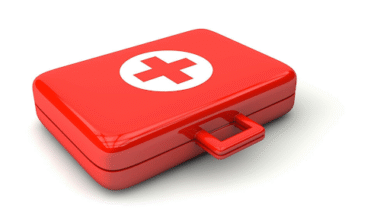The essential role of rehabilitation after injury

Post-injury recovery is not just about rest; you’ve got to rehabilitate. To truly bounce back after a serious sporting injury, it’s essential to restore three things: strength, mobility, and functionality. There’s a mental component, too, ensuring that confidence and motivation levels are soaring again. In short, the stakes are high.
“You’re successfully healed” is music to any athlete or active individual’s ears. Here’s what to know about the essential role of rehabilitation after injury.
The importance of rehabilitation in injury recovery
Never delay rehabilitation. In the UK, NHS guidelines have shifted after recognising the benefit of swift support. There’s a push for strength, mobility, and functionality-based programs immediately after release from acute settings. For instance, a post-surgery plan for those who are rehabbing an ACL injury or hip replacement.
Does that mean you’re instantly returning to run sub-20-minute 5-kilometres? Absolutely not. Instead, a tailored rehabilitation program helps to gradually re-introduce suitable activities and exercises. This could be as simple as introducing a few physio stretches and waiting two weeks before tackling stairs.
Ultimately, though, following professional guidance minimises the risk of re-injury. For athletes, this helps to ensure a faster and safer return to their beloved sport. And mentally? Having such clear goals can drive motivation and combat negative self-talk and injury-associated depression.
Key components of effective rehabilitation
You know that a successful rehabilitation process isn’t one-size-fits-all. However, it’s equally important to understand that the most effective recoveries don’t just factor in one approach. Key components of a fantastic rehab plan include:
- Physio and doctor-recommended exercises (for strength and mobility)
- Rest (to allow cells to repair and minimise pain sensitivity)
- Nutrition (to fuel your body correctly)
- Mental health support (for strengthening the mind and processing the injury)
Professional rehabilitation programs centre around individual needs and the severity of your specific injury. Some people might need different amounts of each component, like resting broken bones longer than a mild strain. Doctors and physios might also recommend alternative treatments, like ice therapy, acupuncture, or massage.
The long-term benefits of proper rehabilitation
Ultimately, the long-term benefit of investing in proper rehabilitation is a successful recovery. Sporting injuries are fickle things; it’s all too easy to accidentally sabotage what could have been a linear recovery. Don’t rush and find yourself back at square one — or with worsened damage.
Rehabilitation can also improve overall sporting performance. Instead of bouncing back, treat recovery seriously and return better. Investing in strength and conditioning effectively prevents a multitude of injuries. A sporting incident can be an eye-opening experience that prompts you to take better care of your body. Watch your performance rocket post-rehab.
The secret to maintaining progress is consistently incorporating rehabilitation strategies, even after symptoms disappear. If your injury was due to somebody else’s actions, it might also be worth seeking no-win, no-fee compensation. Rehabilitation is costly, and justice is an important part of mental recovery.
Desperate to return to your favourite sport post-injury? You know what to do.



